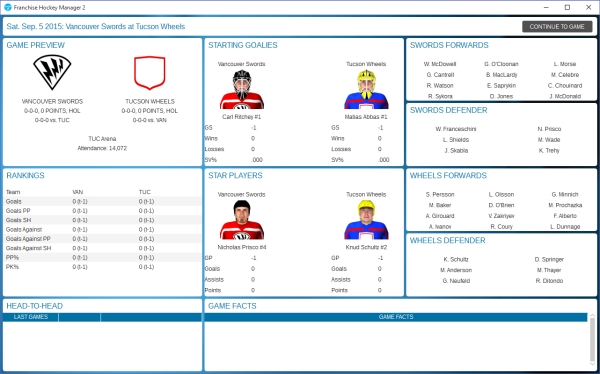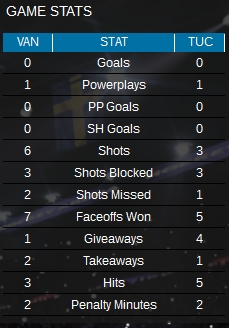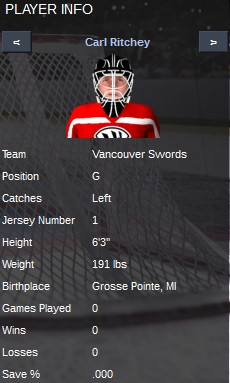| Find in this manual | ||
| Replace with | ||
The Game View in FHM2 features the new, totally overhauled match engine. In addition to generating incredibly realistic game results and statistics, the new engine also allows you to enjoy a highly-detailed play-by-play call, with many options about exactly how much of it you want to see.
Before going to the game, you first see the Preview Screen. This gives you a breakdown of both teams involved in the game: their starting lineups, best players, previous meetings, season records, and so on.

After continuing on from the preview, you arrive at the Game Screen, showing a top-down view of the ice, a variety of different informational boxes, and a number of controls that allow you to customize how you watch the game.

The Top Bar contains five different tabs:
- Game returns you to the main game screen.
- Lineup shows your team's current lineup in the usual format of the Lines screen. This is an active screen, you can use it to adjust your lines during the game.
- Tactics shows your team's current tactics in the usual format of the Tactics screen. This is an active screen, you can use it to adjust your tactics during the game (but they will not override gameplan situations, if any have been set.)
- Stats shows team stat totals for this game.
- Box Score shows this game's box score.
- Change View switches the rink view with a list of player stats; this can be useful if you want to quickly check something without halting the play-by-play.

The Highlights box shows the key events in the game, and can be filtered by period and event type.

The Game Stats box shows a summary of the team stats totals during this game. This box is not shown at narrower resolutions.

The Player Info box shows a short biographical and statistical summary of any player in the game; the chosen player can be cycled using the arrow buttons. This box is not shown at narrower resolutions.

The On-Ice box in the lower left corner shows which players are currently on the ice, arranged by position. Beside each skater's name are two numbers, Game Fatigue (GF) and Shift Fatigue (SF). When either of these numbers reaches 0, the player experiences fatigue effects that inhibit his performance. Game Fatigue is a running total for the whole game and never increases, while Shift Fatigue will replenish when the player gets a chance to rest.

Line selection in the game is handled by the computer (but according to your general line usage instructions set on the tactics screen.) You cannot change who is on the ice yourself, with the exception of changing your current goalie via the lineup screen.
The Controls box allows you a number of choices on how you can watch the game's play-by-play:
- Watch Mode allows you to choose exactly what play-by-play will be shown:
- Full Game shows everything, literally every event in the game
- Offensive Zone Entry only shows what happens after the puck-carrying team enters the defenders' zone.
- All Shots shows each shot attempt (missed or on target) and the events immediately afterwards.
- Action Expanded shows the most "interesting" events in the game - good scoring chances, penalties, and so on.
- Action Condensed shows the same type of events, with less surrounding commentary.
- Scoring Summary shows only plays that result in goals.
- PbP Speed controls the speed at which the play-by-play changes
- Clock Speed controls the speed at which the game itself advances
- User Advance allows you to manually advance the play-by-play by hitting the User Advance button (below) or the space bar.

At the bottom of the box, the control buttons allow you to stop and start the action using Play/Stop, advance manually with User Advance, rapidly complete the period with Sim Period End, and complete the whole game by choosing Sim End. The Sim End button also changes to End Game once the game is over, allowing you to leave the game screen.
Finally, two notes on gameplay: the targeting circle on the ice is only an approximate indicator of the puck's location, not the precise spot the puck carrier is at. If you recall the zones used in the tactical display, he can be anywhere within the boundaries of one of those.
Secondly, you may notice that the clock doesn't run down smoothly second-to-second. Individual plays take varying amounts of time in the game, so the engine will resolve what's happened, and then take the appropriate amount of time off the clock. (We could've cheated around this by predetermining the whole game at the start and then playing back the recorded play-by-play as the clock ticked down second-by-second, but games that do it that way have always felt a little odd to us. We'd rather have a game that really is being played out before your eyes, at the cost of slightly jerky timekeeping.)